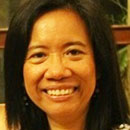Filipinos’ historic affinity and solidarity with Black African Americans go beyond parallel police brutality experienced by George Floyd in Minneapolis, Trayvon Martin in Florida, and Jeffrey Reodica in Toronto.
We can think historically about Filipinos’ parallel experience of anti-Black racism, violence, and racial injustice in colonial wars which showed why and how Filipinos became “a race” within Asia. While Filipinos are Asians, people also invent, shape and reshape race and ethnicity. As academics say, the race is not biological but a social construction.
When it became clear that the United States would not honor Philippine independence, their war with Spain became a war against Filipino revolutionaries in the national independence movement.
One can get an American education without knowing much about the Spanish-American War that ended with the 1898 Treaty of Paris. Thus began the U.S. Empire building and rule over former Spanish colonies --Cuba, the Philippines, Puerto Rico, Guam and eventually, Hawaii and parts of Samoa (Epifanio San Juan).
Even fewer Americans know about the Filipino-American War, which started in 1899 until 1913. Filipinos knew this war from the Sunuginang Samar movie and recent return to the Philippines of the Balanginga church bells taken by American soldiers as war booty. Filipino Muslims registered the highest casualties in massacres publicized in media (Epifanio San Juan).
Journalists and historians called the Filipino-American war the “bloodiest colonial war… ever fought by a white power in Asia” (Bernard Fall). It was “among the cruelest conflicts in the annals of Western imperialism” (Stanley Karnow).
Estimates of Filipino deaths ranged from 20,000 guerillas to 200,000 civilians to 400,000 soldiers to 1 million civilians to a total of 3 million. A common estimate was twenty percent of the entire population of the Philippine Islands, genocide by any standards. In the Philippines, the Americans perfected “water cure”, “water boarding”, “butchering”, “hamletting,” rape of women and other counter-insurgency tactics later used in Vietnam.
Racism, or “the problem of the color-line – the relation of the darker to the lighter races of men in Asia and Africa, in American and the islands of the sea”(W.E.B. Du Bois), was part of the genocide and slow violence that white settlers first inflicted upon Native Americans and Blacks brought as slaves from Africa.
Filipinos were dark-skinned Orientals “killed in an orgy of racist slaughter that evoked much congratulation and approval from the eminent journals and men of the era who were also much concerned about progress and stability at home.” (Gabriel Kolko). That concern about “stability at home” meant continued subjugation of Native Americans and Blacks alongside Philippine pacification.
This racist war placed African American soldiers in a difficult position when the US brought them to fight Filipinos (Scot Ngozi-Brown).
Like their treatment of Indigenous, Mexicans and other Brown and Black peoples in the Americas, the US military saw dark-skinned Filipinos as a “barbarous race,” “new-caught sullen peoples, half-devil and half-child,” called “indios”, “indians”, “niggers”, “negros” and “blacks.
White American soldiers and officers thought of Filipinos "just the same as the American Negro.” Black soldiers noted in writings that white soldiers "thought some of us were natives." (Scot Ngozi-Brown)
Witnessing firsthand the racism and cruelty that reminded them of how Blacks were treated in the states, African-American soldiers questioned their presence and the true goals of the war. Many of them deserted, cut short their service, and others joined the Filipinos fighting for independence.
Black Americans made connections between imperialism, US colonialism abroad, and racism at home. Some tried to form a “National Negro Anti-Expansionist, Anti-Imperialist, Anti-Trust, Anti-Lynching League.”
Some saw their service stint in the Philippines as an escape from their struggles. More than 1,000 African American soldiers in the Philippines remained behind, married native women, and established professions and businesses during American occupation (Scot Ngozi-Brown). Many never returned to the US. By 1972, only two of them were still alive. The majority died fighting other wars, particularly during the Second World War.
David Fagen, perhaps the most famous among Black soldiers in the Philippines, saw Filipinos as allies. After confronting his white American officer, Fagen joined and trained Filipino guerillas under the command of General Jose Alejandrino. Fagen“took up arms against a country racist to the core and bent on empire at the expense of a dark-skinned people. As a revolutionary officer and later as a bandit leader, Fagen confounded the American whites. He not only challenged their supremacist assumptions; he also mocked them, defiant in the face of the noose and the burning stake” (Michael Morey).
Common experiences of racism, empire and colonialism compel us to think of how Filipinos, especially Filipino men, “become Blacks” when experiencing institutionalized inequities, particularly race profiling in policing practices.
I could not think of a better way of commemorating Philippine Heritage Month this year than thinking about these shared histories.


